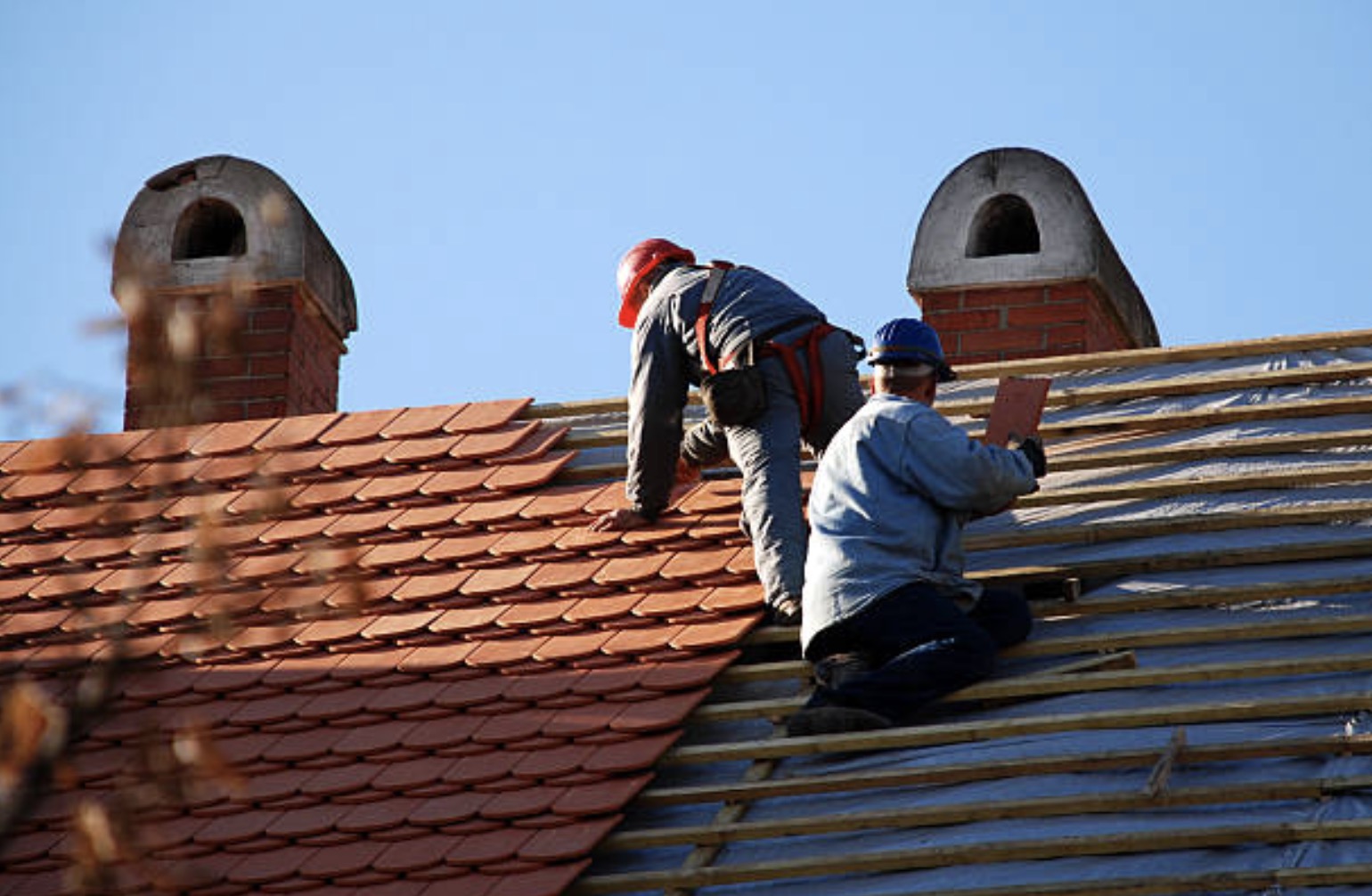Storms happen, regardless of where you live. Whether it’s thunderstorms, strong winds, hail, snow, tornados, or hurricanes, your roof can take a beating. After the storm passes, you probably stick your head outside to survey any damage.
As you’re inspecting your property, don’t forget to look up. Your roof may have suffered damages like broken or missing shingles and it’s an issue you don’t want to ignore. We’re going over the essential first steps to take after storm damage to help you minimize any repair expenses.
Common Types of Storms and Roof Damage
The type of storm can affect roof damage. For example, a snowstorm can result in different types of roof damage than what you may be dealing with after a hurricane.
Hail
Did you know hail storms aren’t limited to colder climates? Even the balmy Gulf Coast can be hit with golf ball-size chunks of hail. You probably know hail can do a number on your car. The vehicle’s roof, hood, and trunk can end up with large circular dents. Hail can even shatter windshields so just imagine what it can do to your roof.
Thankfully, most hail storms typically run out of energy after 15 minutes or so, but it’s still enough time to do some damage to your roof. Dents can appear on your roof. This can be a particular problem for metal roofs. Not only are the dents unattractive, but they can also lead to leaks. Shingles can be knocked loose or broken. When this happens, leaks can be an issue. The missing shingles can also result in higher heating and cooling costs.
Wind
Homeowners tend to hunker down when the wind picks up. After all, you don’t want to be hit in the head by flying debris. Whether you’re dealing with hurricane-force winds that can range from 74 mph and higher or something less severe, you can end up with missing and curled shingles.
Roof shingles are designed and installed to overlap. This creates a water-tight seal preventing leaks from getting inside your home. Even one missing shingle can create damaging leaks. If the leak isn’t repaired, you can end up with mold, mildew, and even structural damage. Removing mold and mildew can be expensive, along with repairing any structural damage caused by a leaking roof.
Clogged Gutters
You may not think of clogged gutters as you’re assessing storm damage to your roof. This is a mistake. Your gutters are a crucial part of your roof’s drainage system.
When a storm blows leaves and other debris into your gutters, clogs are common. This means excess rainwater can’t drain away from your home. Cleaning debris out of gutters is an unpleasant chore but it’s also a necessary part of home ownership. Don’t forget to remove any debris from the roof as you’re cleaning out your gutters.
Essential Steps After a Storm
The storm is finally over and your home is still standing. Best of all, there isn’t any structural damage but what about the roof? As soon as it’s safe, grab a ladder and get ready to climb up to your roof. The first essential step is always checking the overall condition of your roof.
You may also want to grab a camera. The app on your smartphone works just fine. Take some pictures of any visible damage like curled, broken, or missing shingles. The pictures may come in handy when it’s time to submit an insurance claim. Chances are, your policy will cover some or most of your roof repairs.
However, any time you file an insurance claim you’re usually required to provide evidence of the damage. With pictures of the damage, you don’t need to wait for the insurance adjuster’s inspection to have your roof repaired.
Assess the Condition of Your Gutters, Windows, and Roof Vents
As you’re cleaning debris out of your gutters after the storm, look for any dents, cracks, or signs the gutter is pulling away from your house. Your gutter is responsible for draining excess water away from the roof, and your home. You don’t want water leaking inside your home or pooling on the ground.
Your vents are located on the roof. Check for any debris clogging the vents. When your roof can’t breathe, problems can pop up. Clearing the debris out of the vents can help prevent issues with leaks and higher-than-average heating and cooling costs.
Check your windows for any broken or cracked glass. You also want to look for loose weather stripping. While these issues aren’t going to affect roof performance, it’s easy to check as you’re inspecting your roof.
Head to the Attic
Even if your home doesn’t have a traditional attic, you know, a space to store stuff you’re probably never going to use, there should still be a type of crawl space. Head up into the attic to check for any signs of leaks. Even if you don’t notice any signs of moisture, the storm can still damage your roof.
A good tip is to check any visible nails in the attic for signs of frosting. If a nail looks like it’s been frosted, you probably have a leaking roof. You also want to check the home’s ceilings and all hanging light fixtures. You’re looking for water spots and other signs your roof may have developed a leak.
Choosing the Right Roofing Contractor
Even if your roof looks okay after a storm, it’s not a bad idea to schedule an inspection with a roofing contractor.
The professionals know what to look for and how to spot any potential issues before they become expensive problems. Even though you can’t do anything about the weather, you can influence the condition of your roof. This starts with keeping up with routine maintenance and partnering with the right roofing contractor.
Thankfully, choosing a roofing contractor isn’t difficult, especially if you know the questions to ask. Look for a licensed, insured, and experienced roofing contractor, and your home should be in good hands.

